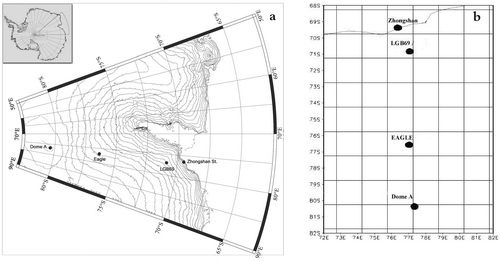Based on daily minimum, maximum, and mean surface air temperatures (Tmin, Tmax, Tmean) from the European Centre for Medium-Range Weather Forecast's reanalysis from 1979 onwards (ERA Interim), the accuracy of daily Tmin and Tmaxreanalysis is assessed against in situ observations from four automatic weather stations (Zhongshan, EAGLE, LGB69, and Dome A) in East Antarctica from 2005 to 2008. ERA Interim generally shows a warm bias for Tmin and a cool bias for Tmax, with an underestimation of the diurnal temperature range. The reanalysis explains more than 84% of the daily and annual variance, and the replicating ability decreases gradually from the coast to the interior, with annual root mean square errors of 2.4 °C, 2.6 °C, 3.0 °C, and 4.3 °C for daily Tmin, and 2.2 °C, 3.1 °C, 3.4 °C, and 4.9 °C for daily Tmax at Zhongshan, LGB69, Eagle, and Dome A, respectively. ERA Interim shows little seasonal variability, although it performs a little better in the austral spring and worse in winter and autumn at Dome A. An analysis on spatial distribution of temperature and wind field indicates that ERA Interim has successfully replicated the progress of temperature extremes developing, occurring, and disappearing. In addition, weather events extracted from ERA Interim mainly occur on the same day as observations, with high cross-correlation coefficients (R ≧ 0.287, N ≧ 1131, P < 0.001). ERA Interim has, despite its regional limitations and deficiencies, proved to be a powerful tool for weather and climate studies in the Antarctic region.
Corresponding authors' email addresses: (Xie) xieaih@lzb.ac.cn; (Wang) wangshimeng@lzb.ac.cn
This research achievement is published on the Arctic, Antarctic and Alpine Research.

FIGURE . Locations of the Automatic Weather Stations along the traverse from Zhongshan Station to Dome A, and with superimposed ERA Interim reanalysis grids (T255 Gaussian grid, 1.5° × 1.5°)





